The Barn
Introduction
Text-to-speech Audio
Images
The Barn
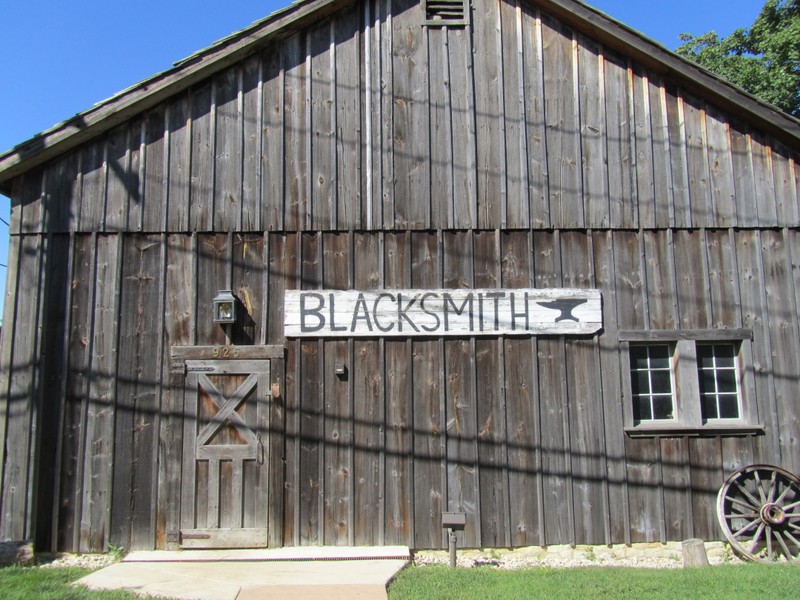
The "Smithy" or Blacksmith working area
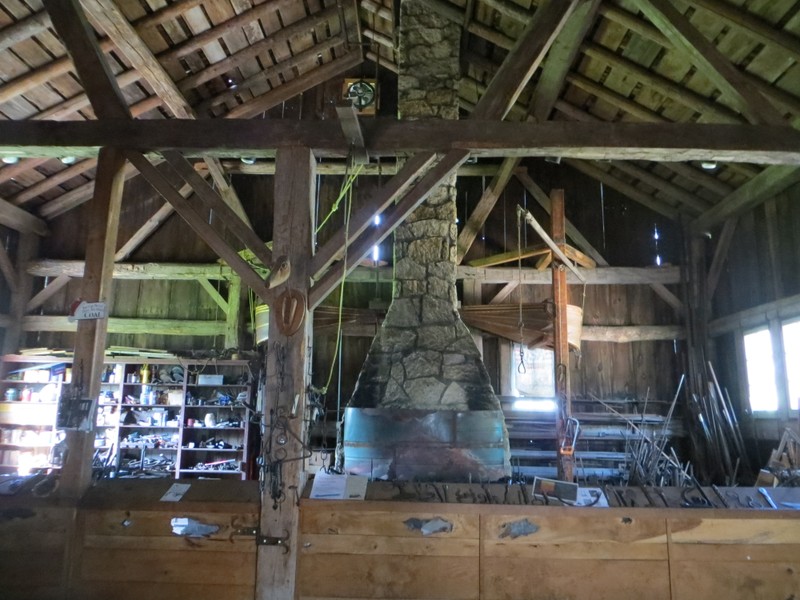
Our forge has two firepots built into the bottom section to allow four people to work at the same time. Notice the bellows on both sides of the forge, one from Lisle's former Haumesser shop (right) and one donated by the Aurora Historical Society (left)...
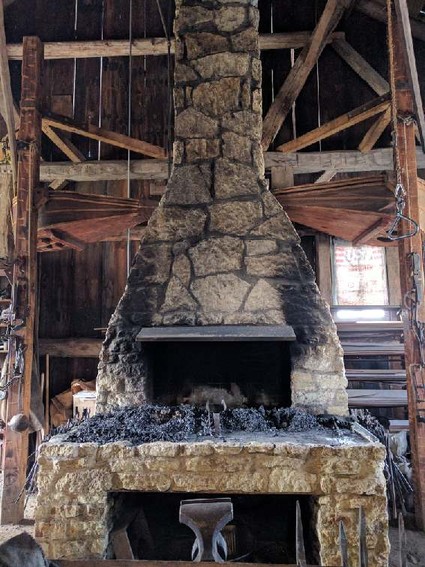
Haumesser Shop bellows before restoration
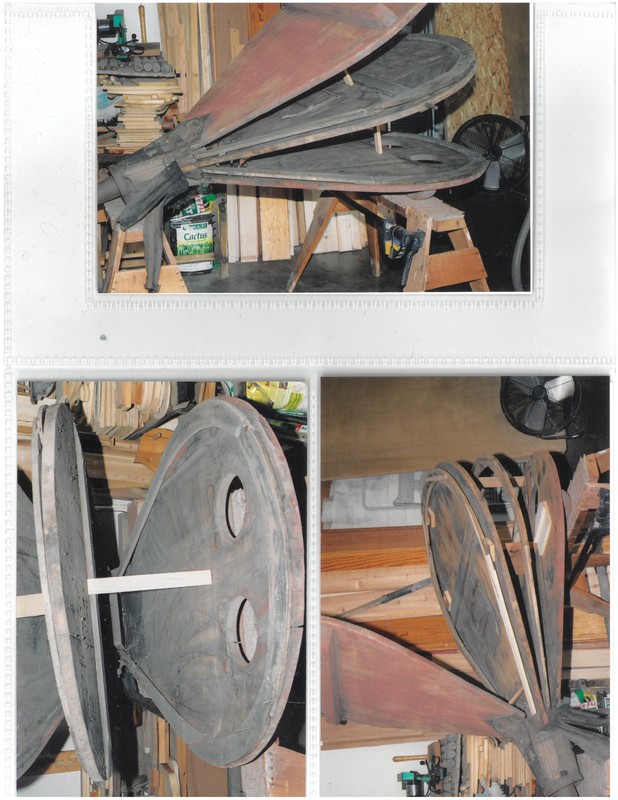
Our volunteer Blacksmiths hard at work
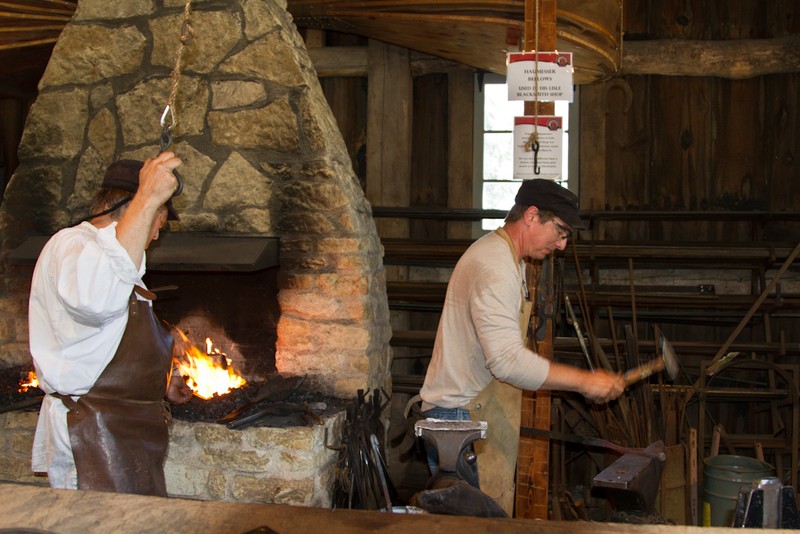
Our volunteer Blacksmiths preparing for an apprentice class
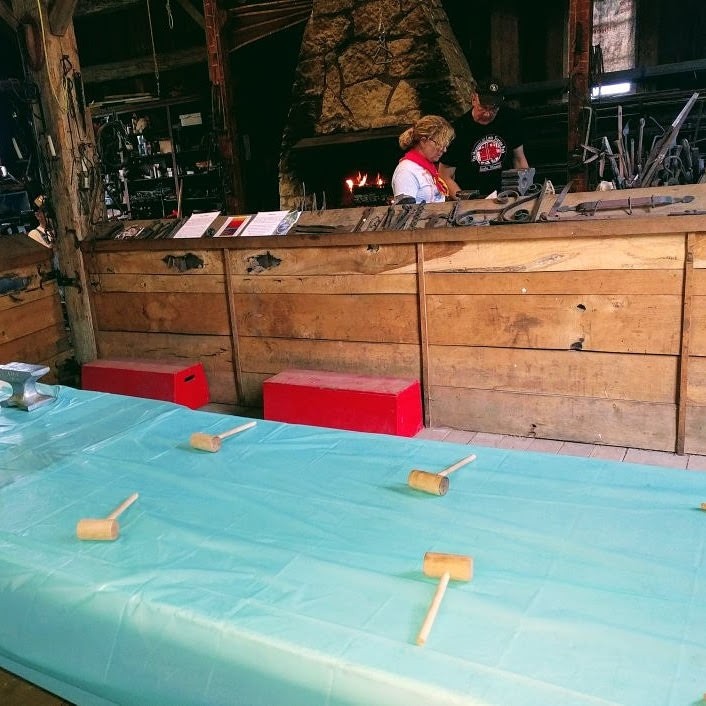
Toy bird made by Lisle Heritage Society Blacksmith volunteers
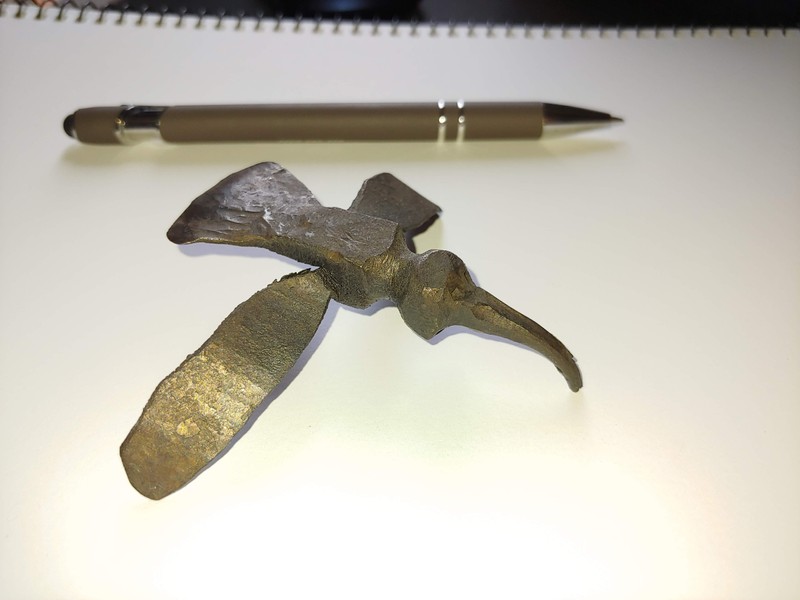
Haumesser Shop bellows after its restoration
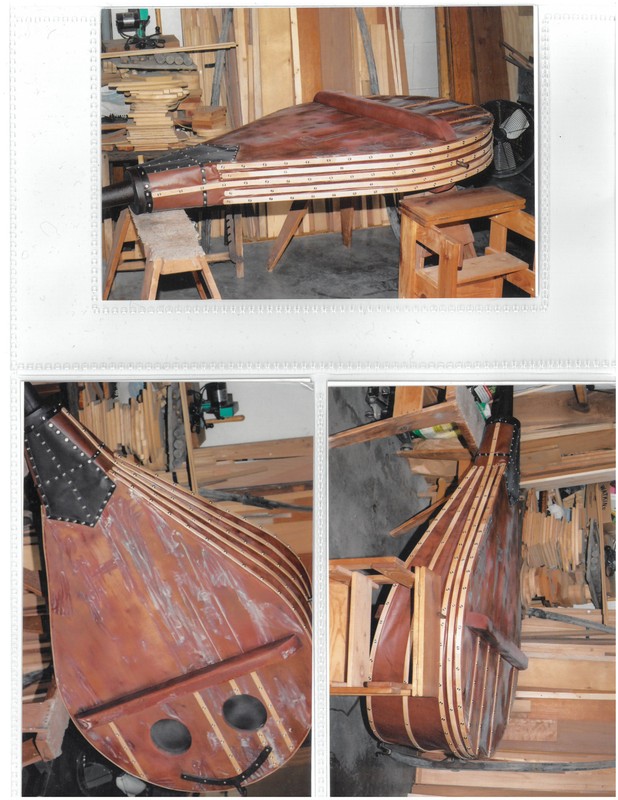
The Double Springpole Lathe (left) and Treadle Lathe (right) inside our Woodshop
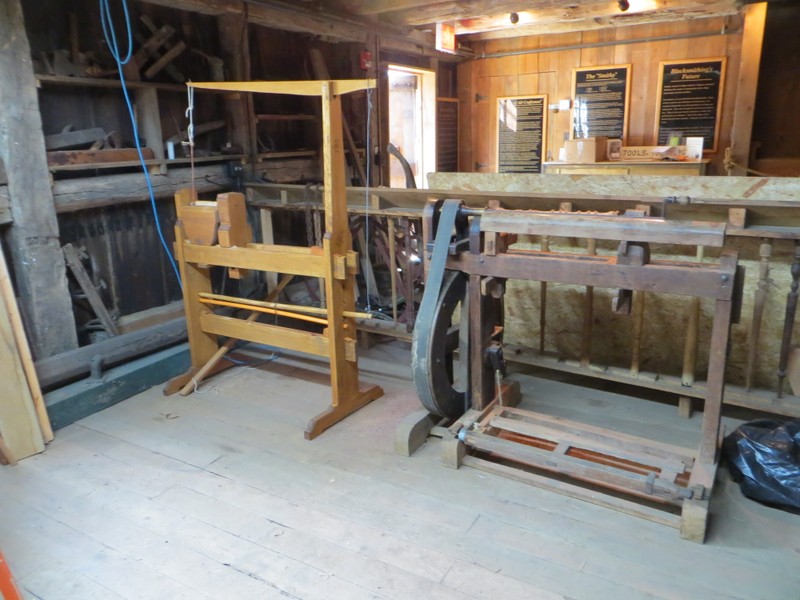
Our volunteer wood turners hard at work
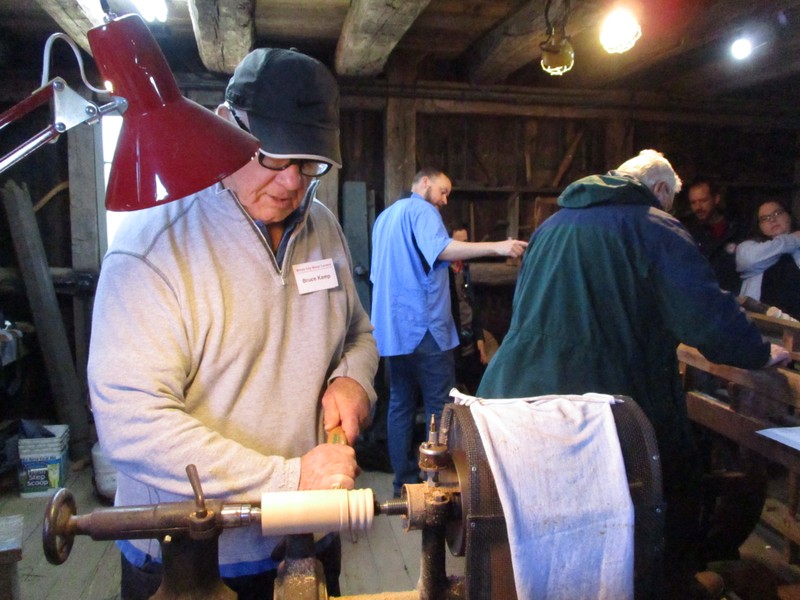
Backstory and Context
Text-to-speech Audio
Trades and Craftworking
People who practiced trades and craftwork were very important for most of human history. Until the department store and the Internet were invented, people had to rely on experienced, trained individuals working with their hands to craft the items that they needed to live. People had to visit their local community’s various trade workers for different items. This involved everything from tools for farmers, pots and pans for cooking, woven rugs and blankets, nails and wood beams for making houses, and even toys for children. Some examples of trade workers were Blacksmiths, weavers, construction workers, stone masons, and brick masons. Young students, called apprentices, trained for years to learn the skills required to work with specific materials such as wood, metals, clay, stone, and more. These students sometimes lived with a master’s family in order to spend more time training.
Some materials were more abundant or easier to gather from the environment while others were not so easily found. It is reported that often when moving to another area, a family would burn their home down to collect iron nails and other metal pieces since they could be recycled into other objects and wood was easily replaceable. Master trade workers knew how to work with raw materials and recycled objects to complete these orders.
The Blacksmith Shop
In 2001, the Lisle Park District obtained a grant and other financial aid which enabled them to replicate a 19th century barn at the museum site. It is made from pieces of three barns originally located 200 miles north in Wisconsin. An architectural restoration contracting firm hired by the Park District disassembled the barn, modified its size, and reassembled it here under the consultation with volunteer and local Blacksmith, Bob Goodwin.
The Barn is made of timber frame construction with wood pegged mortises and tenons. One side of the building is an operational period smithy, or Blacksmith shop, and the other portion is an operational woodshop. This trade business combination would have been typical of the historic time period especially in Lisle. The center display area contains various tools and finished pieces with double barn doors on each end that swing open to accommodate large items. The large forge was designed with two firepots inside and built in place using stones from the Beaubien Tavern’s original foundation.
Lisle Heritage Society volunteers completed most of the interior work, built railings, hauled logs to the sawmill and returned with rough cut lumber, provided tools, installed the bellows, and, most of all, dedicate their time and skills to provide demonstrations, teach classes, and make custom items to be sold. For information on taking Blacksmithing classes with us, please take a copy of our Blacksmithing brochure. Visit our smiths during an open work night, watch a class, or schedule a private demonstration or field trip with museum staff.
Blacksmithing: An Ancient Craft
Blacksmiths shape iron by heating it and hitting it. That is why we call them “Blacksmiths” – they smite (or strike) Black metal to make tools and art. People have been shaping iron in this fashion for at least 6000 years. So by the time James Hatch built Lisle’s first Blacksmith shop in 1833, Blacksmithing was already an ancient craft.
The Forge
Blacksmiths cannot shape iron unless they get it very hot. The forge is a fireplace that reaches extremely high temperatures and is the central feature of the smithy. Fire needs three things to burn: heat, fuel, and air. Blacksmiths ignite charcoal – a specially prepared wood that burns very hot with little smoke. Coal is used as the fire’s main fuel. Each forge’s design allows Blacksmiths add air in different ways to control the fire’s temperature.
Our forge uses a combination of large bellows on either side and an electric fan near the top to control airflow. It was constructed using the stone bricks from the Beaubien Tavern’s original foundation. If you look closely at the bottom, you will see a tiny brick with the handprint of a child in it. This brick was found in the walls of the Netzley/Yender House Summer Kitchen and was probably pressed in by one of Jacob and Mary Netzley’s children during the room’s construction.
Bellows
A bellows is a tool used to puff air. It pushes a controlled stream of air into the forge and over the coals. Some bellows are smaller and made for household fireplaces, but forge bellows must be large and manageable for smiths to use. Smiths pull on a rope to flatten the bellows, and when they expand again they suck air into the forge. Our bellows made of a wooden frame and leather coverings located near the top of the forge. The smaller bellows (left) was donated by the Aurora Historical Society. The larger bellows (right) was used in the Haumesser Blacksmith shop, a Lisle smithy just off the Southwest Plank Road (current-day NW corner of Ogden Avenue and Main Street) in the mid-19th century, provided by Haumesser descendants, the Beals family.
The “Smithy”
Little is known about Hatch’s Blacksmith shop. Nevertheless, eight types of equipment are central to any “smithy,” or smith’s workshop area. If we were to go back in time and visit Hatch, we would probably find him hard at work with the following tools:
- Forge
- Bellows
- Anvil
- Hammers and Tongs
- Anvil Tools
- Set Tools
- Slack Tub
- Bench and Post Vise
Blacksmiths cannot shape iron unless they get it very hot. So, the (1) Forge, a fireplace that reaches extremely high temperatures, is probably the most important part of the smithy. Blacksmiths heat their forges by carefully combining fire and air. The fire comes when they ignite charcoal – a specially prepared wood that burn very hot with little smoke. Air must blow over the burning charcoal to maintain this heat. That is what the (2) Bellows does. It pushes a controlled stream of air into the forge and over the coals.
You will also find a dizzying array of hand tools around a smithy. Not surprisingly, many of these tools have long handles, which keep the Blacksmith’s hands away from fire and hot iron. (4) Hammers and Tongs are perhaps the most important hand tools. As you might guess, Blacksmiths hold iron with their tongs and pound it against the (3) Anvil with various hammers. Smiths use a number of (5) Anvil Tools during this process. These items, like the “hardy” and the “half penny snub-end scroll,” fit into a square “hardy hole” near the anvil’s read edge. Blacksmiths can shape and cut iron y placing it onto such anvil tools and hammering it out.
(6) Set Tools are another important group of hand tools. They resemble hammers because they are metal pieces with long handles. However, Blacksmiths do not swing set tools. Rather, they “set” these tools onto a piece of heated iron and strike them with hammers. This helps the Blacksmiths to cut or shape the iron underneath. Once Blacksmiths use their tools to pound hot iron into shape, they cool it or “quench” it in water. That is why you will find a (7) Slack Tub in any smithy. Blacksmiths place these tubs beside their forges. They are often wine or whisky barrels cut in half. The Blacksmith’s (8) Bench, like those of other craftspeople, consists of heavy planks and is home to many special tools, including bench shears, hacksaws, nippers, and pliers. But the most interesting part of the workbench may be the Post Vise. This name is quite appropriate, for unlike ordinary bench vises, the “post” vise has a long column that the Blacksmith buries into the smithy’s floor. Because Blacksmiths work with heavy iron, they must anchor equipment like vises and anvils.
These are just some of the tools essential to general Blacksmithing. James Hatch may have also performed specialized tasks like shoeing horses and fixing wheels. Such jobs required tools too numerous to cover here. We invite you to learn more about these implements by referring to Blacksmithing brochure “Suggestions for Further Reading.” These sources were invaluable in creating our exhibits: they will bring you further insights into the world of Blacksmithing.
Blacksmithing’s Future
Machines have made us independent of the village Blacksmiths and their smithies. Nevertheless, we can still learn from Blacksmiths. Many of their ancient ways will help us in the present. For example Blacksmiths recycled long before recycling was popular. They often foraged for old iron and made it new. Thus, a rusty gun barrel could meet a smith’s fire and become a new hammer. That is the magic of the Blacksmiths and their smithies. They give new life to what is old. Our purpose at The Museums at Lisle Station Park is similar. We hope that this exhibit revives interest in the Blacksmiths and their ancient craft. While they are no longer the center of village life, they will remain an important part of human history. For information on taking Blacksmithing classes with us, please take home a copy of our Blacksmithing brochure. Visit our smiths during an open work night, watch a class, or schedule a private demonstration with museum staff.
Woodshop
This area of our barn is a wood turning workshop. This means that experienced craftworkers spin wood using machines called lathes to create useful and decorative items. These include pieces of furniture, tools for working at home or on farms, ornaments for decoration, toys, and more. Turning wood has a different set of skills than wood carving, but there are people who specialize in both of these trades by spending years practicing with experts.
The items you see on display were created by experienced volunteers who practice this craft. Many of our woodshop volunteers visit us from the Windy City Woodturners, a local chapter of the American Association of Woodturners.
Double Spring Pole Lathe
This Double Spring Pole Lathe is both the oldest and newest in the woodshop collection. Oldest because the design dates back to the 17th century. Roy Underhill (PBS Woodwright Shop) adapted the design from an encyclopedia of that era. Underhill holds week-long classes where students can build a lathe. Mark McCleary of Villa Park attended one of those classes and donated the lathe he built in 2014 to the Lisle Heritage Society. Therefore it is the newest lathe in our collection.
The operation of this lathe depends on a pedal at the floor, and a cord around the wooden spindle that is then fastened to the spring pole above. Pushing on the pedal rotates the spindle in the direction that allows the operator to make cuts with a chisel. When the peddle travels as far as it can, the spring pole on the top pulls the cord back up causing the spindle to rotate in the wrong direction to make cuts. The operator can only make cuts on the down stroke of the pedal, then wait for the pedal to come back up before pushing it down to make another cutting stroke.
This type of lathe uses an intermittent motion – back and forth rather than continuous rotation. Both of our other lathes in the woodshop create a continuous rotation of the spindle in the same direction, making the operator’s jog easier. But the Spring Pole lathe had some unique advantages that gave it a solid place in wood turning history. First it is a simple design that can be created using simple hand tools (as this one was). And second, it can be easily disassembled and carried from site to site including the forest. The frame is held together with mortise and tenon joints secured by wedges.
Mark McCleary donated this lathe in 2016. Both Mark’s and Roy Underhill’s signatures are visible on the tall end frame.
Treadle Powered Lathe
This treadle powered wood lathe was found and purchased in a northern Wisconsin Lake Superior shore town. It had been deaccessioned from a local museum. Sometime in the 17th century the treadle lathe concept was improved and developed into the form seen here. The flywheel was counter balanced with internal weights to provide smooth, continued and balanced power to the object being turned and speed was increased by driving a much smaller pulley by the large flywheel. This allowed the cutting tool to be working continually on the turned object instead of intermittently as with the spring pole lathe.
Sheldon Lathe
The E. H. Sheldon & Company operated in the late 1800s and early 1900s in Chicago, Evanston, and later in Muskegon Michigan. The company manufactured vises and workbenches, specializing in school laboratory equipment. This lathe design may have been manufactured for use in vocational training.
The design could have accommodated power transfer from an overhead common drive shaft. This arrangement was common in early shop settings. Our Sheldon is now powered from below by an antique 1hp electric motor. The current drive arrangement allows only one speed, whereas the pulley arrangement at the spindle would permit three. The lengthwise capacity of this lathe is not sufficient to turn a spindle for the woodshop gallery in a single pass. Therefore spindles will be turned in two pieces and joined together.
Considering that this lathe is over 100 years old we take special care in its use. The bearings are of bronze or poured babbitt type. These bearings were never intended for high rotation speeds and require frequent oiling. We think this Sheldon lathe was built around 1910. It was donated by Fred Kalkirtz who also played a huge part in inventing, machining and providing parts to make the lathe operational. Blacksmiths volunteers were also heavily involved in bringing this machine back to life.
Sources
Resources collected and researched by The Museums at Lisle Station Park (MLSP) staff and volunteers
MLSP
MLSP
MLSP
MLSP
MLSP
MLSP
MLSP
MLSP
MLSP
MLSP
